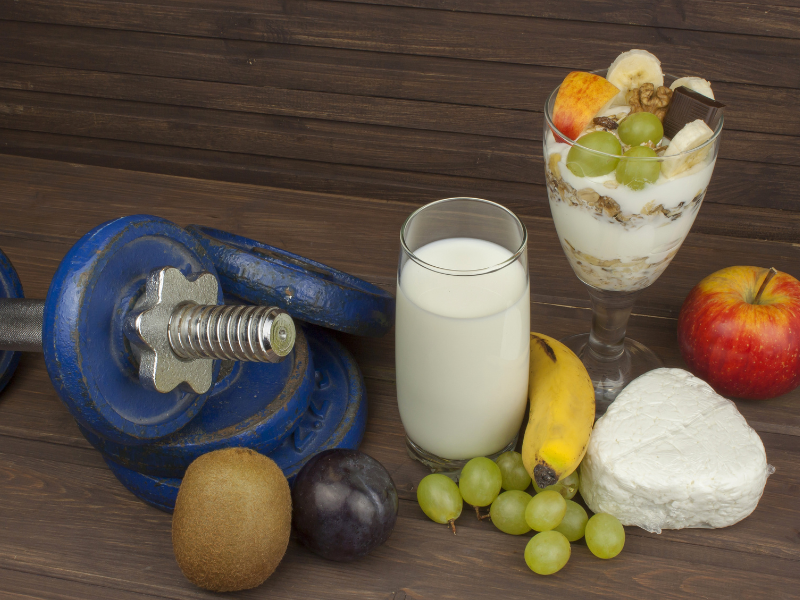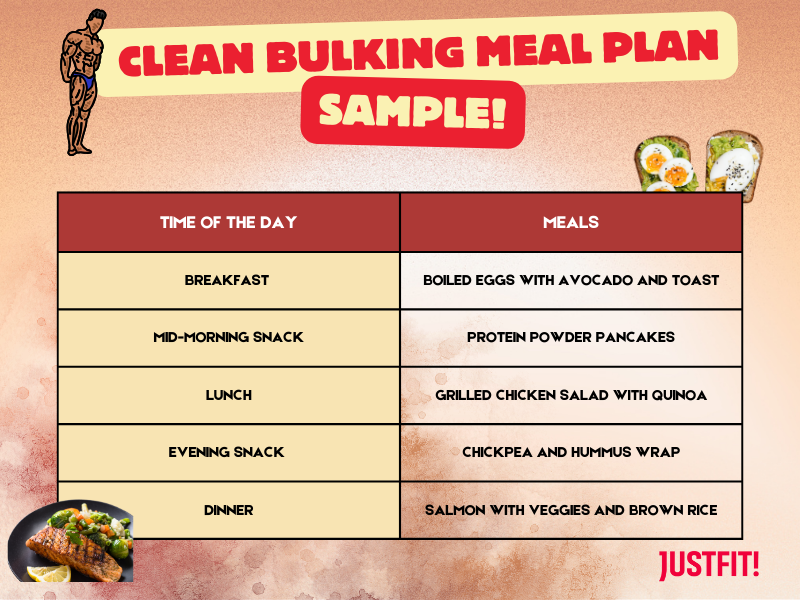


Managing the right calorie intake for your fitness goals sure is no easy job, and a lot of us often take drastic measures if you’re looking to lose or gain weight. However, for your results to be long-lasting, a stable process is the way to go. If you’re aiming for lean muscle gain, we recommend the clean bulk meal plan as the healthiest and most sustainable route. So dive into this article to learn more about the lean bulk meal plan, along with a sample high-protein diet that can help you structure your own routine.
What is Clean Bulking?

Clean bulking is an approach to muscle building that involves minimizing fat gain while having a calorie surplus diet, which is around 5-10% above maintenance [1]. The diet requires you to have nutrient-dense, unprocessed whole foods in contrast to the dirty bulking method, which will have you consuming high-calorie junk food for excessive fat gain.
Dirty bulking can help with faster weight gain, but clean bulking is much more sustainable for muscle growth and developing the right body composition. Hence why it’s highly favored amongst athletes in bodybuilding and other sports.
How Do You Start on a Clean Bulking Plan?
The priority should be to gain a slight calorie surplus rather than overeating, and this will help with avoiding unnecessary fat gain. Combine this with regular resistance training and progressive overload to stimulate muscle growth effectively. The following are the steps you should first take if you’re planning on pursuing a clean bulk meal plan:

- Calculate Calorie Maintenance: You need to first calculate how many calories you need to maintain your current weight. This can be easily determined using some helpful online tools such as the Calorie Calculator.
- Add a Small Calorie Surplus: Your daily calorie intake should be increased by 10-20% depending on how much is recommended for your according to your weight.
- Prioritize Protein: It is important to have a balanced diet filled with healthy fats, carbohydrates, and especially protein. Consume 0.7–1 gram of protein per pound of body weight to support muscle growth and fill up the remaining calorie gap with carbs and fats. Your protein intake could also include plant-based protein sources like tofu and beans.
- Track Progress: Tracking your progress is essential to this process so you must weigh yourself regularly and aim for a gradual weight gain of 0.25–0.5% of your body weight each week. For instance, if you weigh 135 lbs, aim for a gain of 0.4–0.8 lbs weekly.
- Adjust Calories as Needed: If weight gain gets stagnant, increase your calorie intake by 100–200 calories each week.
For a protein-rich diet:
10 High-Protein Cottage Cheese Recipes: Sweet and Savoury
8 Delicious Protein Shake Recipes for Muscle Building
CTA BANNER
Benefits of Clean Bulking
Clean bulking offers great benefits, including [2]:

- More Muscle, Less Fat: With a controlled calorie surplus (350–500 extra calories), you build muscle while minimizing body fat gain.
- Better Health: Whole, nutrient-rich foods improve overall health and reduce the risk of chronic diseases.
- Improved Performance: Gaining lean muscle and minimizing fat means improved physical performance. This is especially great for athletes who need strength, endurance, and a lean physique to perform at their best.
- Less Fat Gain: A balanced approach that helps prevent excessive fat gain, unlike dirty bulking.
- Health Protection: Clean bulking lowers the risk of issues like high cholesterol and blood sugar by focusing on whole foods.
Foods to Eat and Avoid
For meals that you’re encouraged to eat on this diet, the following are the three main food groups to focus on:
- Lean Protein Sources: Fish, eggs, chicken breast, turkey breast, and plant-based protein sources.
- Complex Carbohydrates: Brown rice, sweet potatoes, quinoa, leafy vegetables, oats, and whole wheat bread
- Healthy Fats: Avocado, nuts, fatty fish, olive oil, and seeds.
Foods to avoid on this diet would be:
- Heavily processed meals like frozen food, fried chicken, pizza, etc.
- Products with high sugar content like candy, pastries, and ice cream.
- Meat with high fat content like pork or fatty beef
- Carbonated, sweetened, or alcoholic beverages.
Sample Clean Bulking Meal Plan
To make your life even easier, we’ve put together a sample clean bulk meal plan for a day to give you an idea of how your weekly meal plans could be structured. It is recommended to have 4-5 small meals throughout the day for this plan. Remember to tweak your meals according to your heavy and light workout days too to make sure you get the nutrients you need for gaining muscle and muscle recovery:

Breakfast: Boiled eggs with avocado and toast
Mid-morning snack: Protein powder pancakes
Lunch: Grilled chicken salad with quinoa
Evening snack: Chickpea and hummus wrap
Dinner: Salmon with veggies and brown rice
Conclusion
In conclusion, the clean bulk meal plan can be described as a slow but sustainable way towards building lean muscle mass. Like most cases, hard work and patience gives the biggest rewards. For more tips on how you can change your diet and exercises plan for a healthy and fit lifestyle, check out the JustFit app!
What foods are good for clean bulking?
How many meals should I have in a day for clean bulking?
What should I avoid during clean bulk?
MaxiNutrition. (2016, December 1). Basic rules for clean bulking. MaxiNutrition. Available at: https://www.maxinutrition.com/blogs/sports/basic-rules-for-clean-bulking
Williams, D. A. (2022, September 12). Is clean eating healthy?. welzo. Available at: https://welzo.com/blogs/vitamins-nutrition/is-clean-bulking-healthy





